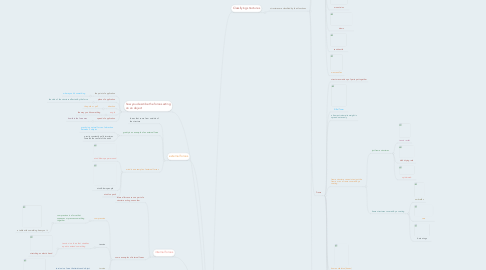
1. snowing
1.1. low magnitude
2. internal forces
2.1. internal forces are one part of a structure acting on another
2.2. some examples of internal forces
2.2.1. compression
2.2.1.1. compression is a force that squeezes or presses something together
2.2.1.1.1. a table with something heavy on it
2.2.2. tension
2.2.2.1. tension is a force that stretches apart to extend something
2.2.2.1.1. stretching an elastic band
2.2.3. torsion
2.2.3.1. torsion is a force that twists and object
2.2.3.1.1. twisting an elastic band
2.2.4. shear
2.2.4.1. shear is a force that pushes in two opposite directions
2.2.4.1.1. ripper two Twizzlers apart
3. external forces
3.1. forces that come from outside of the structure
3.2. gravity is an example of an external force
3.2.1. gravity is a natural force of attraction between 2 objects
3.2.2. gravity constantly pulls structures towards the center of the earth
3.3. wind is an example of external forces
3.3.1. wind blows paper around
3.3.2. wind blows people
3.3.3. wind is a push
4. magnitude
4.1. magnitude is how strong a force is
4.2. examples
4.2.1. wind blowing a tree
4.2.1.1. strong magnitude
4.2.2. snow falling on a car
4.2.2.1. strong magnitude
5. how you describe the forces acting on an object
5.1. the point of application
5.1.1. where you hit something
5.2. plane of application
5.2.1. the side of the structure affected by the force
5.3. direction
5.3.1. the push or pull
5.4. angle
5.4.1. the way you hit something
5.5. speed of application
5.5.1. how fast the force was
6. the center of the earth
6.1. the center of the earth is where gravity pulls objects towards
6.2. gravity is weaker at the center of the earth
6.3. examples
6.3.1. gravity when an apple falls
6.3.2. no gravity in space
6.3.3. gravity in the center of the earth
7. forces
7.1. a force is any push or pull acting on an object
7.1.1. forces act on all structues
7.1.2. all structures must be designed to stand any type of force
7.1.3. if a structure is not strong enough to handle the forces acting on it then it will be structure failure
7.1.4. forces help you build and design better structures
7.1.5. examples of structures that experienced forces
7.1.5.1. buckled roads
7.1.5.2. homes destroyed by tornadoes
7.1.5.3. homes collapse
7.1.5.4. old buildings breaking down
8. Classifying structures
8.1. structures are classified by their functions
8.1.1. Shell
8.1.1.1. it doesn't use alot of material
8.1.1.2. a shell structure is usually curved
8.1.1.3. igloo
8.1.1.4. a skull
8.1.1.5. a shell structure is light weight and can usually carry objects
8.1.1.6. a shell structure is hollow in the inside
8.1.1.7. a shell structure is one of the strongest types of structues
8.1.1.8. domed roof
8.1.1.9. milk carton
8.1.1.10. balloons
8.1.1.11. containers
8.1.1.12. clothing
8.1.2. Solid
8.1.2.1. a solid structure is a structure that is usually solid all the way through.
8.1.2.2. solid structures uses the most materials
8.1.2.3. the great wall of china
8.1.2.4. cement
8.1.2.5. a solid structures ways more than a shell structure using the same amount of materials and the same size
8.1.2.6. sand castle
8.1.2.7. mountains
8.1.2.8. dams
8.1.2.9. wax candles
8.1.2.10. apples
8.1.2.11. a solid structure weighs for than a hollow structure using the same amount of material and same size
8.1.2.12. apples
8.1.2.13. mountains
8.1.2.14. dams
8.1.2.15. sand castle
8.1.2.16. wax candles
8.1.3. Frame
8.1.3.1. structures made up of parts put together
8.1.3.2. Eiffel Tower
8.1.3.3. a frame structure its weight is spread out evenly
8.1.3.4. frame structure can exist as just the frame or as a frame covered by a coating.
8.1.3.4.1. just frame structures
8.1.3.4.2. frame structures covered by a coating
8.1.3.5. human skeleton (bones)
8.1.3.6. uses the least materials.
8.1.3.7. a frame structure usually tall and very strong
8.1.3.8. a bicycle frame
8.1.3.9. the parts that are put together are called structural components
8.1.4. combination structures
8.1.4.1. combination structures are structures that are frame, solid, and shell combined
8.1.4.2. many structures are combination structures
8.1.4.3. house
8.1.4.3.1. solid structures
8.1.4.3.2. frame structures
8.1.4.4. human skeleton
8.1.4.4.1. the skull is a shell structure
8.1.4.4.2. the body is a frame structure because all the bones are all fastened together
9. Types of loads
9.1. dynamic loads
9.1.1. dynamic load is the wind, snow, or anything that makes a force towards the dead load
9.1.2. dynamic loads can change
9.1.3. examples
9.1.3.1. a soccer ball hitting a net
9.2. Live Load
9.2.1. live load is the weigh on top of the dead load
9.2.2. there can be no live load
9.2.3. example
9.2.3.1. a person sitting on a chair
9.3. Dead Load
9.3.1. dead load is the bottom where all the weigh is put to
9.3.2. a building
9.4. static load
9.4.1. static load is the effect of gravity on a structure

